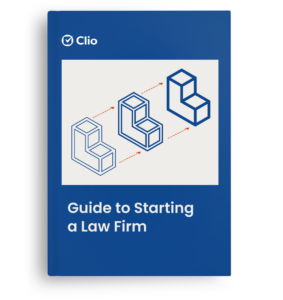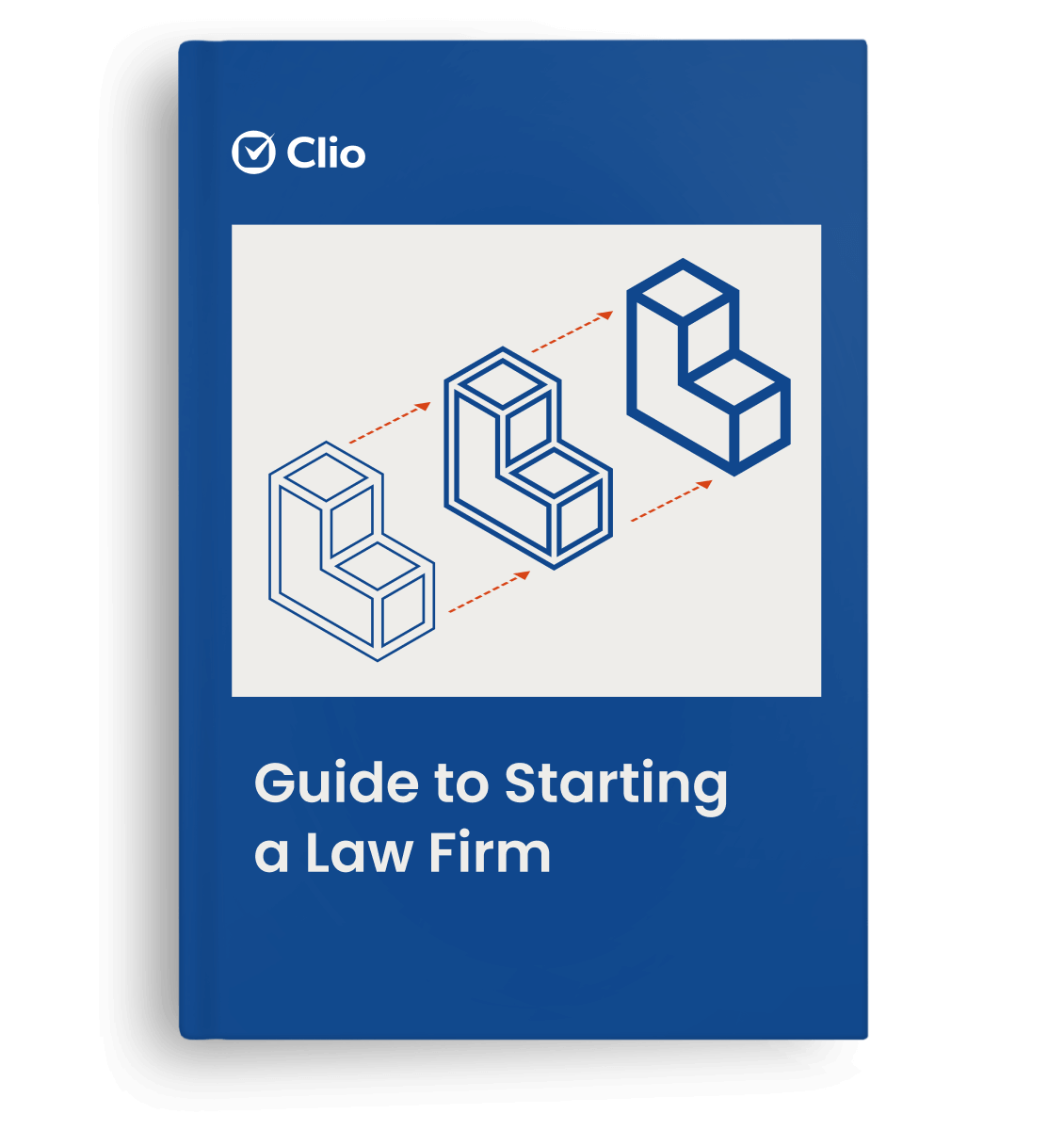If you’ve ever been a guest at a five-star hotel, you know that it feels different from a two-star hotel. While the end result (a place to sleep) is the same, the experience is totally different. A two-star motel gets the job done, but you forget all about it the moment you leave the lobby. With a five-star stay, however, you remember the experience. If you can, you return the next time you’re in town—and recommend it to your friends and family.
In today’s experience-driven world where people are accustomed to the effortless services of Netflix and Amazon, many forward-thinking law firms are shifting towards a more client-centered
What is law firm client service?
To John, law firm client service is really about the kind of experience you give clients—past, present, and future. Put simply, client service is “the experience that a business is providing, beyond a technical or physical product.”
Law firm client service statistics

Improving their law firm customer service can help attorneys like John stand out, and get more clients. In some cases, simply showing up can help you stand out.
“I mean, when I get calls and just hear people say, ‘Oh, well, you answered the phone,’ or, ‘We called somebody else and they didn’t come off professionally,’ it’s like, ‘Oh my gosh.’ It’s almost like it’s too easy sometimes. And that’s not true. It’s a hard job no matter what, and it’s something that I feel is differentiating me.”
You may like these posts
What does exceptional law firm client service look like?

As Jack Newton explains in his book, The Client-Centered Law Firm, you don’t necessarily need to be constantly wowing your customers in order to give them a positive client experience. The key to exceptional law firm client service centers on accurately meeting your clients’ expectations and delivering on their needs in a way that makes their experience as effortless as possible. In most cases, this translates to making things easy for your clients and clearly letting them know what the legal process will look like.
“The more that you can make yourself the better option and the easier option to deal with,” John says, “it will result in better clients, and more clients, and more referrals, and all the rest of that happy chain of events.”
Setting law firm client service standards

Whether it’s at a five-star hotel or a law firm, you can’t consistently deliver the level of service customers expect without having a framework to follow.
Working at the Four Seasons, for example, John saw how set standards—developed with the customer’s experience in mind—allowed staff to deliver an elevated experience to guests.
A detailed system
“Just working at the hotel, there were structures to how you did everything,” John explains. “It wasn’t an accident how anything happened at the hotel. Of course, things got adapted all the time … but there was a 21-point list of things you had to hit on a check-in.”
From the client’s perspective, these service standards were invisible. All the guests knew when they checked out was that they’d been treated well and they had a positive, consistent experience.
Anticipating client needs
Structured standards for service, John notes, make it easy to anticipate customer needs.
“As the person checking in, you knew, ‘All right, well I’ve got to structure it this way so that I can make sure I’m providing all the information that a guest is going to need,’” John says. “Things like, ‘All right, you’re checking in. Where are three places you can get food in the hotel right now?’ Because a person who’s checking in has traveled from somewhere else, so anticipating that they’re going to have that need.”
These kinds of structured standards can simplify the process of law firm client service. However, John notes that many firms are thinking only one step at a time: “It’s more, ‘Okay, here’s our next thing, here’s our next thing.’ And not thinking, ‘Okay, well 10 steps down the line, we’re going to want it to look like this.’”
How can attorneys begin to structure customer service standards at their firm? For law firms—and in almost any industry—the basic steps are the same:
- Gather information about client needs.
- Identify and write down the clear steps required to meet those needs.
- Train all staff on the process (and why it’s important).
Tips to improve law firm client service in your practice

Improving the client experience in your practice can be a boon for your firm. But it requires effort and a shift to a client-centered mindset. Consider the following tips that can help you get started.
1. Develop empathy for your client and act on it
When you’re caught up in the technical aspects of legal work, it can be easy to forget that legal issues can be incredibly stressful for clients. As The Client-Centered Law Firm outlines, empathy is key to running a client-centered law firm—and it’s also the first step in offering a great client experience. Actively make an effort to show empathy and understand what your client is going through. More importantly, look for ways to act on that empathy. Empathy should be present throughout your legal work, even—and perhaps especially—when preparing legal arguments, according to Neal Katyal.
This can be as simple as getting in the habit of using a person’s name three times when you’re speaking with them on the phone to show that you’re truly listening—a habit that John picked up at the Four Seasons.
“We’re clearly paying attention to each other [sitting across from each other], but if we’re on a phone call, you don’t know if I’m paying attention to you or if I’m worried about somebody who’s yelling down the hall or anything else,” John explains. “So, I’ve got to reinforce that I’m listening by using your name and kind of calling you back and saying, ‘Hey, I’m right here. I’m still paying attention to you.’”
2. Review and improve your client journey
The client journey is the path your client takes with you, and it starts earlier than you think—from the first moment that your client realizes that they have a legal issue. Examine and map out the journey of your client’s experience—stage by stage—from the start to the closing of their legal matter. Break your processes down for each touchpoint in the journey, think about each point from your client’s perspective, and look for opportunities to improve.
3. Create a seamless client intake process
One of the key touchpoints in a client’s journey is the client intake process, so it’s a good idea to make it. Technology can help (Clio Grow, for example, can automate your intake process with tools like shareable, online intake forms), but you should also periodically assess how your process is really working for your clients.
“I’ve revamped the onboarding process recently, because the way we were doing it, we ended up not having clients like it that much,” John says. “The reaction to this feedback from clients was, ‘Oh, okay great. I’m going to stop doing it that way. We’re going to revamp and make it easier for everybody and kind of address those pain points.’”
4. Be responsive
If you want to improve your standards of service, you need to be responsive.
Ignoring or not getting back to clients in a timely way is stressful for them, and is a quick route to a poor experience (and a loss of business for your firm).
Despite this, according to the 2019 Legal Trends Report, 64% of clients indicated that they’d contacted a law practice that never responded, and…79% of potential clients indicated that they expected firms to respond to phone or email communications within 24 hours. It becomes obvious that a lack of responsiveness is a clear area for improvement for many attorneys.
5. Communicate clearly
6. Price your services with your clients in mind

Ensure that your pricing strategy aligns with your client’s interests. This doesn’t mean discounting your expertise, but rather, as John explains, “recognizing the prices that I’m going to charge are based on my knowledge and service that I’m providing and a whole host of things.”
Make your value clear
If clients feel underserved or unnecessarily in the dark when it comes to legal costs, they’re not receiving the level of communication they deserve or a client-centered experience. To mitigate this, price your services in a way that helps your client clearly see the value they’re getting. If the billable hour makes it hard for clients to anticipate what their legal costs may be, for example, you might be asking them to shoulder too much pricing risk—and an alternative billing model could better serve them.
Consider different pricing models
While the billable hour may still be a common strategy for lawyers, there are other pricing models available that might work better for clients in certain situations. When looking at your legal billing strategy, consider offering alternative billing arrangements like sliding-scale fees, flat fees, or subscription-based billing.
Offer online payment options
Allowing online payments by credit card (the Payments feature in Clio Manage lets you offer online credit card payment options) makes the billing experience easier for clients. The added convenience for clients may also help you get paid faster, too, as the 2018 Legal Trends Report found that 57% of electronic payments get paid within the same day they are billed, and 85% get paid within a week—a win-win.
Learn more with our guide to law firm pricing.
7. Make your services accessible
In order to create a truly great client experience, make an effort to ensure that your services are accessible to all potential clients.
Your law firm website is a good place to start. By making it easier for more people to find your practice online, you can increase access to your legal services. Evaluate your website for accessibility, looking at factors pertaining to:
- Technical design. Are you able to modify your website’s design to make it accessible to people with low vision (using screen readers)? Could your website be more accessible to people who are using mouse alternatives due to mobility issues? The Web Content Accessibility Guidelines are a good resource.
- Visual design. Can you add text descriptions of photos on your website for people with limited vision? Consider what colors you use on your website (to accommodate people who may be color blind). Similarly, look into your website’s contrast checking your text color to your page’s background color for ease of reading.
8. Use technology (the right way) for better client service
As Jack outlines in his book, technology can help shape better client-centered experiences. Tech can be helpful for clients if they see it, and it’s almost always helpful for streamlining processes in the backend of your firm. This can benefit your clients without them even realizing it.
The key to using technology the right way at your firm? Prioritize process over shiny new tools when choosing tech. Focus on adding technology that can meet your firm’s specific needs, and that you and your staff will actually use.
By leveraging Clio Manage’s practice management software, for example, you can keep your cases better organized so you can focus more on your clients, while also making things like e-signatures and online payments more streamlined and convenient for clients. Clio Manage’s Law Firm Insights Dashboard also makes it easier to track your firm’s time and billing—so you have more time to spend on creating a positive client experience.
9. Solicit feedback from your clients
Conclusion
By delivering an exceptional client experience, you can elevate your firm from one that just provides legal deliverables to a firm that clients recommend, review positively, and return to when they need further services.
A good place to start is by researching and brainstorming ways to better serve your clients. Jack Newton’s book is an essential resource for learning about client-centered law firms.
Be patient, and remember that adopting client-centered legal services is an investment in your firm’s future. As John says, “To be better at service, it does take investment. You’re not going to do this for free. And so, that may mean that it takes longer to get certain things done or you may have to get something else done. The response is, then, if you’re providing more service, you can raise your rates, and raise what you’re charging to reflect that.”
We published this blog post in August 2020. Last updated: .
Categorized in: Business









